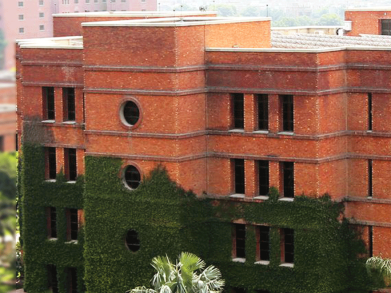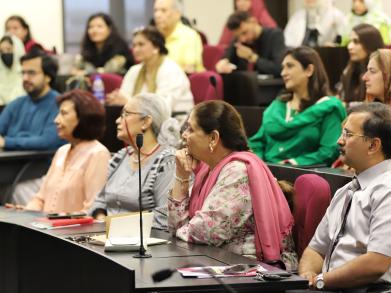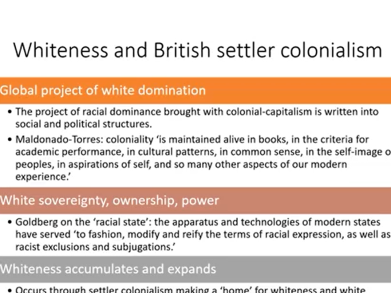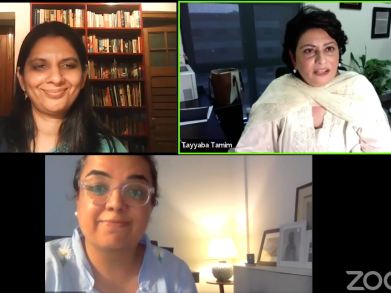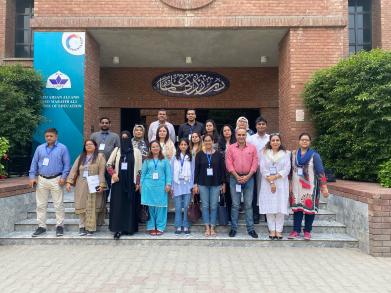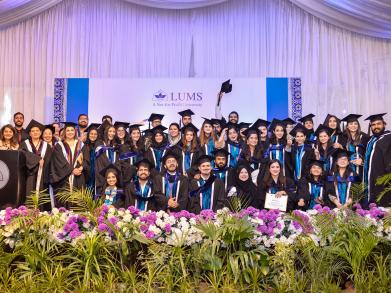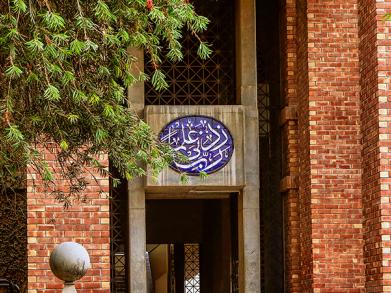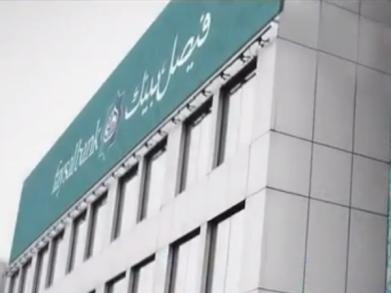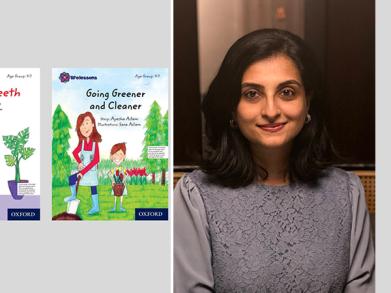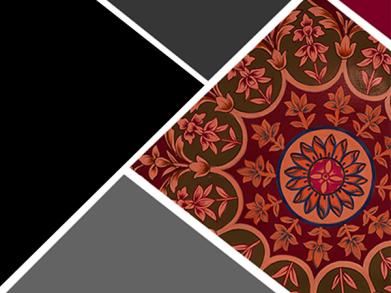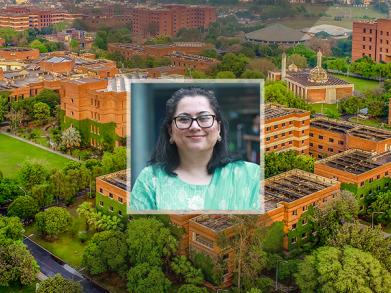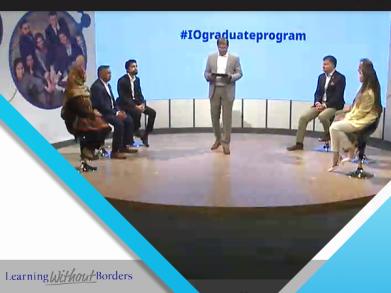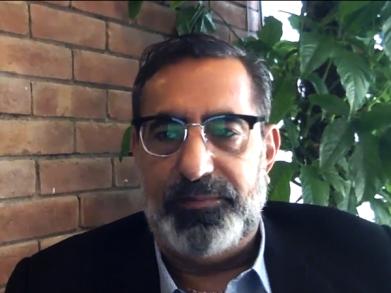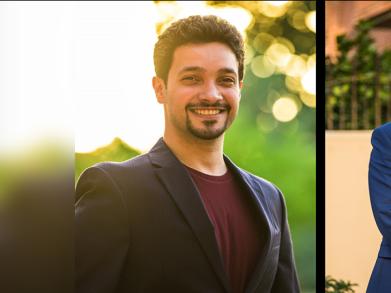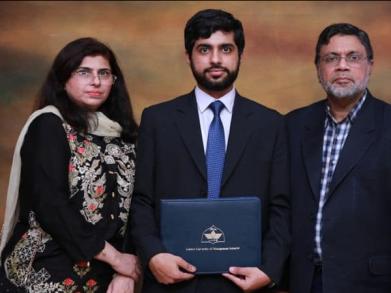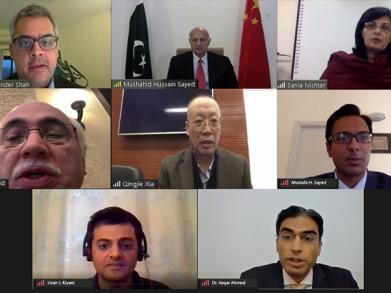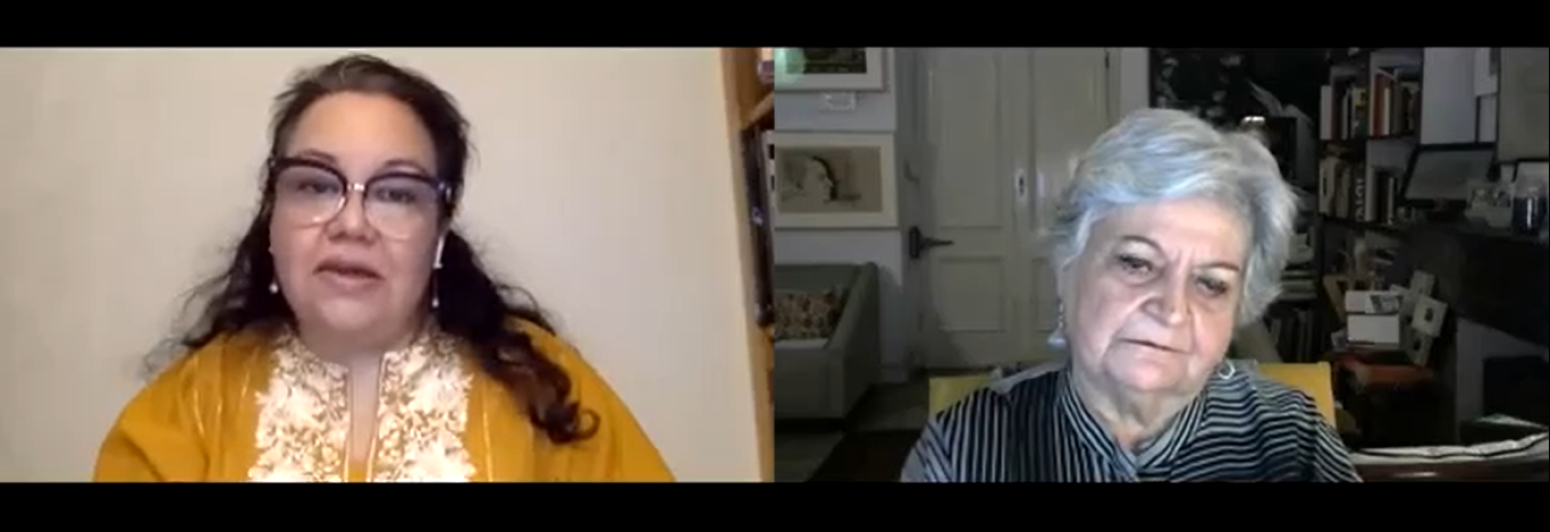
to
The LUMS Syed Ahsan Ali & Syed Maratib Ali School of Education (SOE), in its EduTalk series, hosted a session on the theme “Seeing, Doing, Imagining: The Future of Art Education in Pakistan.”
The session hosted by Dr. Razia Iram Sadik, Associate Professor SOE, invited Professor Salima Hashmi, Founding Dean, School of Visual Arts and Design at BNU, Professor Emeritus as the guest speaker. The session opened with discussion about the history of art and its linkage with heritage and legacies we are not aware of, challenging the misconception that the whole notion of art making and art education comes from elsewhere. While talking about the avenues of art education other than the formal institutions, Professor Hashmi explained that how museums which can serve as hubs of educational outreach, seldom perform this task.
Highlighting the role of engaging with different materials in learning spaces and expansion in mediums, material possibilities and methods of the visual arts, Professor Hashmi elaborated on how enhancing the ability to make art and craft with any material at hand is an integral component in this expansion. This engagement with different materials in the process of art making also plays a significant role in skill-building of children and is a vital element in the overall education, which if ignored could lead to an impediment in their growth and development. In light of this, Professor Hashmi stressed on the importance of classrooms as places of creativity, calmness and joy rather than a place where discovery is denied. The curriculum denying creativity also reflects the lack of understanding of what is missing. While art education shall be accepted as a separate domain, we must understand its intrinsic nature and efficacy linked to various other disciplines.
Regarding changing perspectives on art education, she further elaborated on how art education must not be seen solely as an add-on in a school setting for aesthetics, rather it shall be viewed as an essential component of the curriculum. Every learner is now exposed to various images all day long through the use of technology and hence makes sense of the world via images which essentially explains the basic narrative of art education which relies on understanding and reading into the images. This interconnection and significant impact on the refined understanding truly explains why art education shall be a part of the curriculum. While addressing what creativity entails, Professor Hashmi stressed on enhancing the opportunities which enable creativity. Designing curriculum which promotes inquisitiveness and the ability to ask questions plays a pivot role in enhancing creative abilities of children.
Dr. Faisal Bari, Dean of School of Education, while participating in the Q/A segment of the session, asked that how being exposed to various forms of art education impacts the sensibility of a student in terms of his or her understanding of other subjects in comparison to a student who has never been exposed to such forms of art education. Professor Hashmi while addressing this question explained that how art education promotes inclusion and engagement of all your senses, hence positively impacting your ability to understand and comprehend. The session ended with Professor Hashmi stressing on the importance of inclusion of arts and creativity in children’s education in Pakistan.


